By Justin Pinder
Posted on February 11, 2007
|
Built from 1961 to 1974, the Jaguar E-type was a successor to the competitively successful D-Type, which dominated Le Mans in the 1950’s. The aerodynamics for both the E-Type and the D-Type were based on principles from the aircraft industry and were designed by mathematician Malcolm Sayer.
It’s generally thought of as one of the most beautiful cars ever produced; the series 1 E-Type is considered such a work of art that the Museum of Modern Art (MoMA) in New York City has had a 1963 vehicle on display for 5 years. |
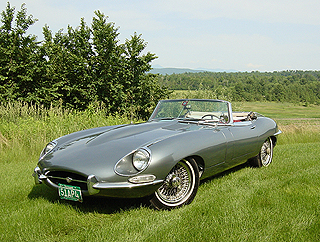
|
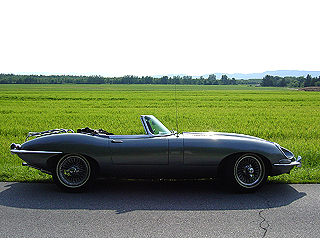
|
The 4.2 liter Series I E-type was introduced in 1964. Fitted with a 250+ HP variation of the XK engine, this model was available in both “family-style” 2+2 configuration, FHC (fixed head coup, or hard top) and as an OTS (open two seater). |
| As 1968 neared, Jaguar was forced to make changes to the Series I E-Type in order to conform with safety and environmental laws in the United States. Some of these changes included different carburetters and bigger bumpers. These changes were phased in over time, resulting in a number of unique E-Types that had components from both Series I and Series II. These models were nicknamed ‘Series 1½’, although this was not an official designation. |
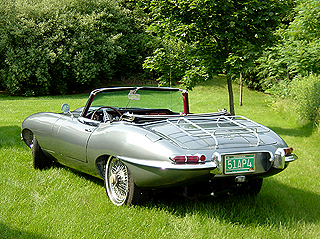
|
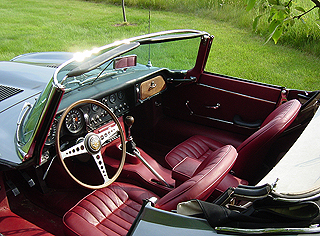 |
This 1 ½ Series E-type retained most of the favorable features from the Series I E-Type, namely the triple SU carburators and toggle switches. It is metallic gray with a black roof and red leather interior (with the exception of the dash, which is also black.) It has the original wire-spoke chrome wheels. |
This particular vehicle was purchased in the 1970’s from the original owner. It was then used as a daily driver for a number of years (including a trek from Canada to Florida!)In the late 1980’s, it underwent a complete restoration. It now sits in a garage in Vermont waiting for that perfect summer day.
(Source: Peter Jungbeker) |
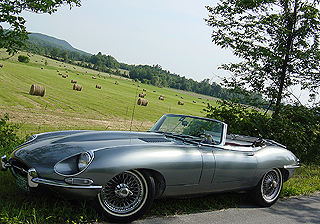
|